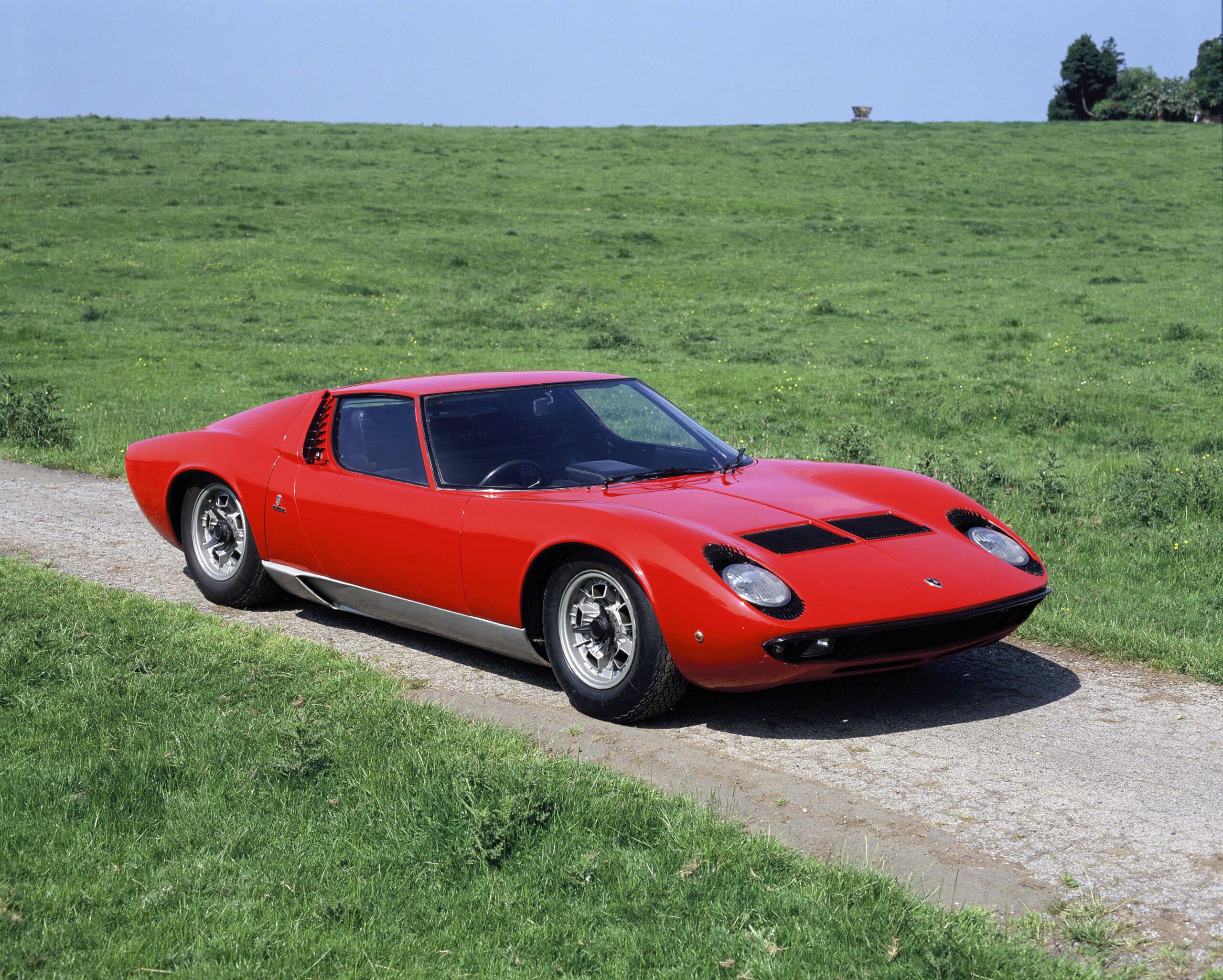It rarely happens in automotive history that one car changes the whole perspective of the segment, sets new standards, and influences generations of car designers and engineers. In 1965, Lamborghini did just that. It created history, revolutionized the way we perceive sports cars, and presented a car so advanced that Enzo Ferrari, its biggest competitor, stormed out of Torino Motor Show in anger. But what could frustrate him so much that he missed the biggest event of the year? The answer is the Lamborghini Miura, the first supercar and one of the most significant icons of the industry. Here is its story.
To fully understand the essence of Miura, we first must focus on its background. In 1966, Lamborghini was a company a few years old and conceived as a result of a famous grudge between Ferruccio Lamborghini and Enzo Ferrari. Ferruccio wowed to show Ferrari that he was capable of building world-class sports cars, and with the 350 GT introduced in 1963, he did just that. However, Ferruccio wasn’t fully satisfied despite the 350 GT being a more advanced and better car than similar Ferrari 250-Series models. He needed something so advanced and aggressive that his competitor would look desperately outdated and slow. So, he assembled an all-star crew of designers and engineers along with his famous test driver Bob Wallace. Their task was to create a car that had never been seen before and make it better, faster, and more capable than any Ferrari currently in production. A limited time frame and budget accompanied very lofty expectations from Ferruccio. However, Gian Paolo Dallara, as chief engineer, felt very motivated and accepted the project.
The heart of the new car would be Bizzarrini’s 3.9-liter V12 engine which debuted in Lamborghini 350 GT a few years earlier. Giotto Bizzarrini, another ex-Ferrari employee was young and talented engineer which gave the Lamborghini its first proper engine in form of high-revving V12. Even though the engine was fairly compact, Dallara decided to put it transversally behind the driver creating a short wheelbase vehicle but allowing more space in the interior and superb weight balance. It was a very innovative idea, not seen before, but it required immense work to construct a proper 5-speed gearbox to fit in the tight space between the engine and rear suspension. Dallara worked overtime to complete the first rolling chassis by late 1965, while Marcelo Gandini in Bertone worked on the design to cover this mechanical masterpiece.
Miura’s design was equally innovative as the technology beneath it. Gandini worked closely with Dallara since the initial idea needed to be carefully tailored to fit over advanced construction. The car needed to be reasonably comfortable, with interior features and functional doors, but still look aggressive, fast, and aerodynamical.
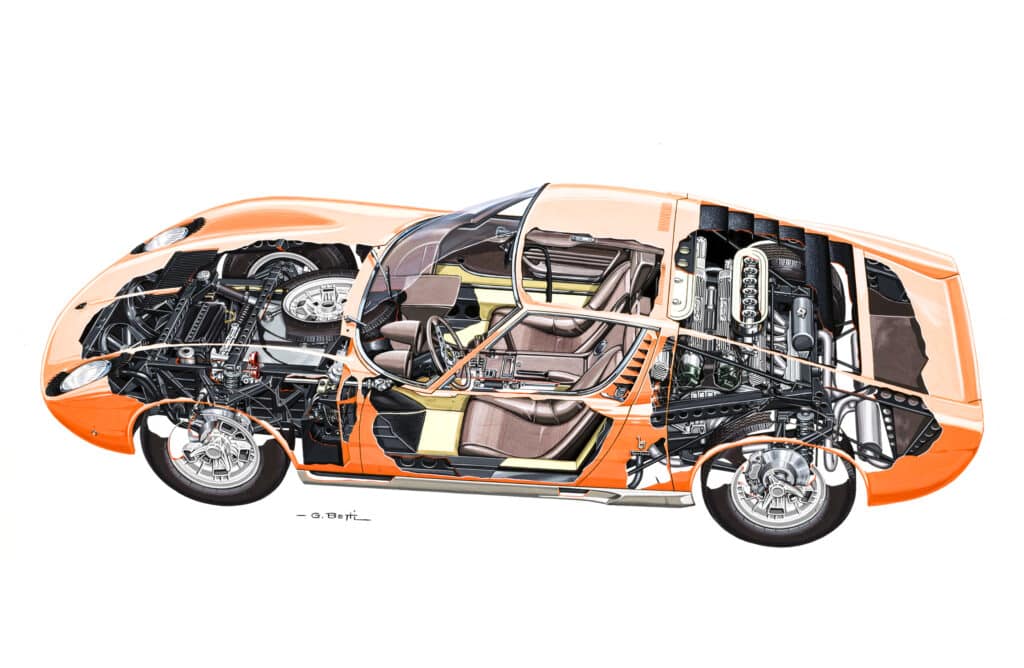
Putting his whole heart into this project, Gandini managed to create a dramatic shape that is at the same time incredibly dynamic but immensely beautiful with carefully sculpted lines, low silhouette, and several unique design features like headlights that pop up or doors that look like bull’s horns when open. It was the detail that Ferruccio especially liked since the bull is the company’s logo, and Miura was the name derived from the famous line of Spain’s fighting bulls. This model established the tradition of calling Lamborghini models with similar names.
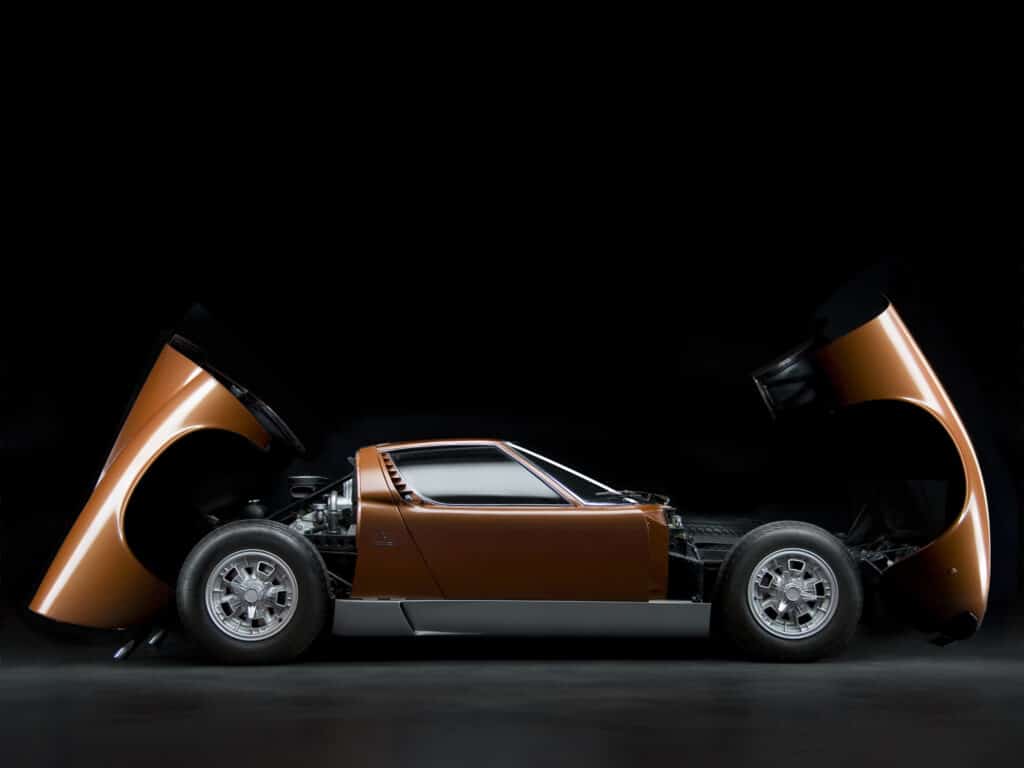
The car was officially released in 1966 and received with enthusiasm by the collectors and motoring press. The journalist recognized it as a heroic attempt and a very advanced vehicle with numerous industry firsts. The customers were seduced by the sensual lines, enormous price, and incredible performance. The first version was called P400 and featured 3.9-liter V12 with 350 hp. With 0 to 60 mph time of 5.2 seconds and a top speed of 180 mph, Miura was also one of the fastest cars of the era. However, despite being launched, the car was far from perfect. Ferruccio wanted to beat Ferrari so bad that he ordered that the fourth car constructed was the first one sold, shortened the testing process, and, as a result, made Miura slightly unfinished. Amongst the sports car experts of the period, there was a joke that the first owners of Miura were also the factory’s development drivers.
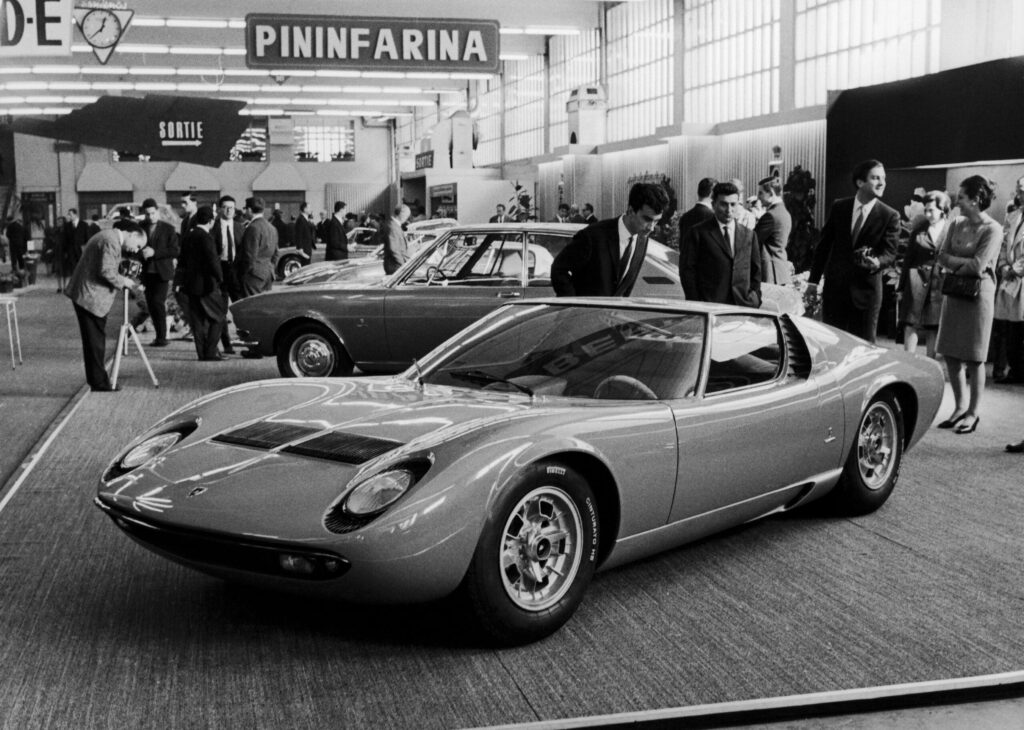
Since the Miura wasn’t perfected, after just a couple of years, Lamborghini released a new version – P400S. It featured a slight increase in power and a high-revving V12 now delivered 370 hp. It also had revised suspension, wider wheels and tires, and several changes made to the car’s aerodynamics. All of that was needed since the owners reported that the nose of the car was lifted at high speeds. Even though the car was noticeably more stable and better to drive, the development process continued, and in 1971, the final and probably the best version was released – Miura SV.
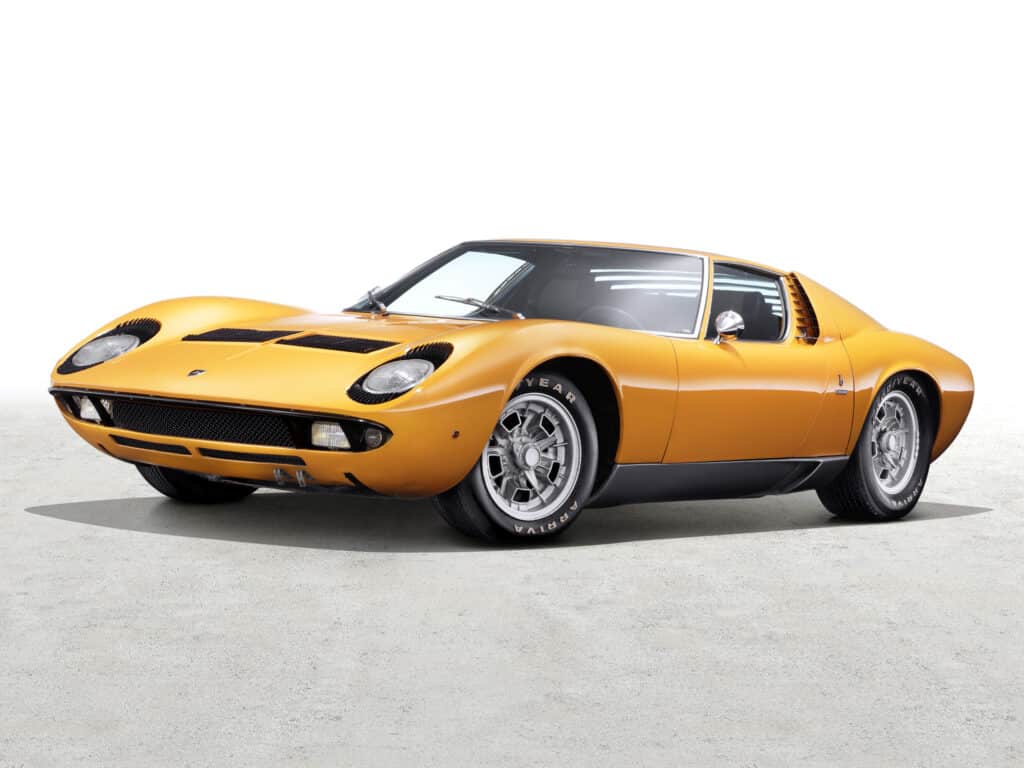
The Miura SV featured a slightly upgraded engine with 385 hp, better performance, and few mechanical and exterior tweaks. It was delivered with wider rear wheels, more prominent wheel arches, and interior equipment and can be recognized by the lack of “eyelashes” around the headlights can be identified. Some later models even had limited-slip differential, which further improved the handling. The stability problems at high speeds were sorted, and Miura SV was more planted and better to drive. Of course, the Miura SV is also the most sought-after of all Miura models.
Even though the Miura SV was the last official version before the production ceased in 1973, one more variant was rarely mentioned in official literature. Still, it was offered to valuable customers as an upgrade. Called Miura SV/J, it was a “factory hot rod” model that featured extreme engine, suspension, and design improvements. Only about seven cars were converted from SV/J specs, and all got wider wheels and wheel arches, spoilers, and upgraded engines that delivered close to 430 hp! Even after the production ended, those cars were upgraded from existing specs by special requests. People who were lucky to drive one of those seven examples testify that SV/J was brutal and barely road legal but an unforgettable experience.
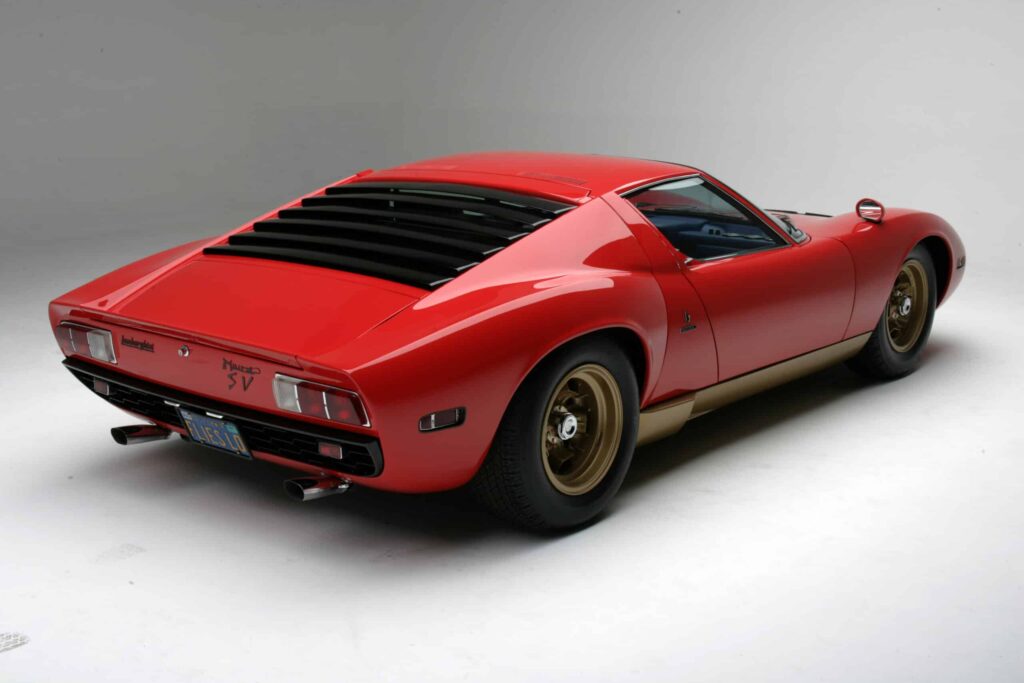
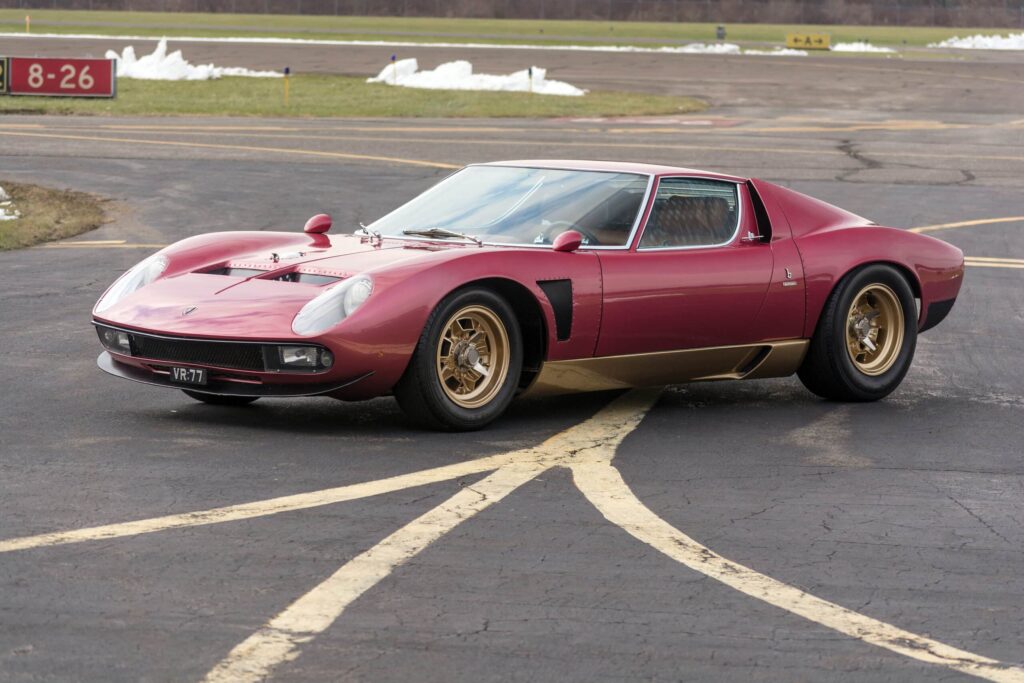
Even though the Miura’s layout, power, and handling characteristics suggested that it would be a fantastic racing machine, Ferruccio was strongly opposed to any racing venture. Contrary to his rival from Maranello, he thought that racing was a waste of time, so Miura never had any chance of competing in the then-popular GT class. Bob Wallace, a factory test driver, created Miura J, practically a racing prototype, but it was lost in a fire in the early ’70s.
As you might expect, Lamborgini Miura was the favorite sports car of the late 60s – early 70s jet set. Even at a $20,000 price that was more than comparable Ferrari, Lamborghini’s waiting list was long and resembled the “Who is Who.” People like Frank Sinatra, Rod Stewart, Miles Davis, and Reza Pahlavi Shah of Iran owned Miuras when new. However, the appeal of this incredible car draws many modern enthusiasts, so well-restored examples are now cherished by Adam Carolla, Jay Leno, and Nicolas Cage, who owned ex-Shah example.
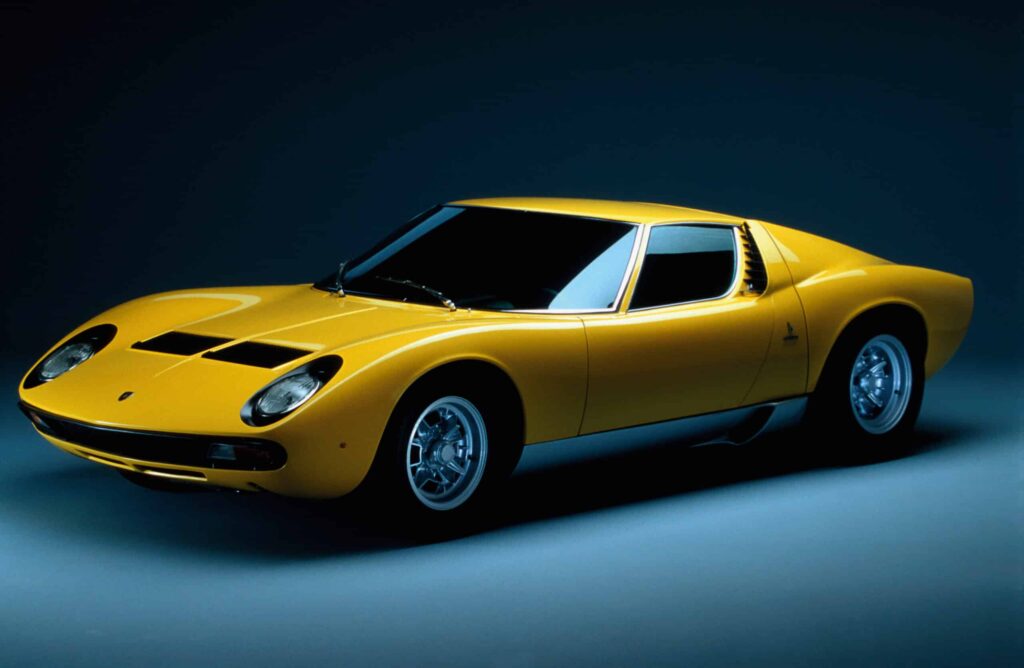
In terms of production, Lamborghini Miura could be considered quite a success, and during its seven-year production period, exactly 764 cars were constructed, including a few open-top prototypes. Even though it is not a large number, putting it into the market’s perspective back in the late 60s and early 70s and regarding its high price, we can call it a great success, without a doubt. During its somewhat short but immensely interesting life, Miura managed to become a symbol of a time and triumph of engineering, which influenced the whole supercar genre for decades to come. Last but not least, it proved to be perfect revenge for Ferruccio and a lesson that Enzo never forgot.



